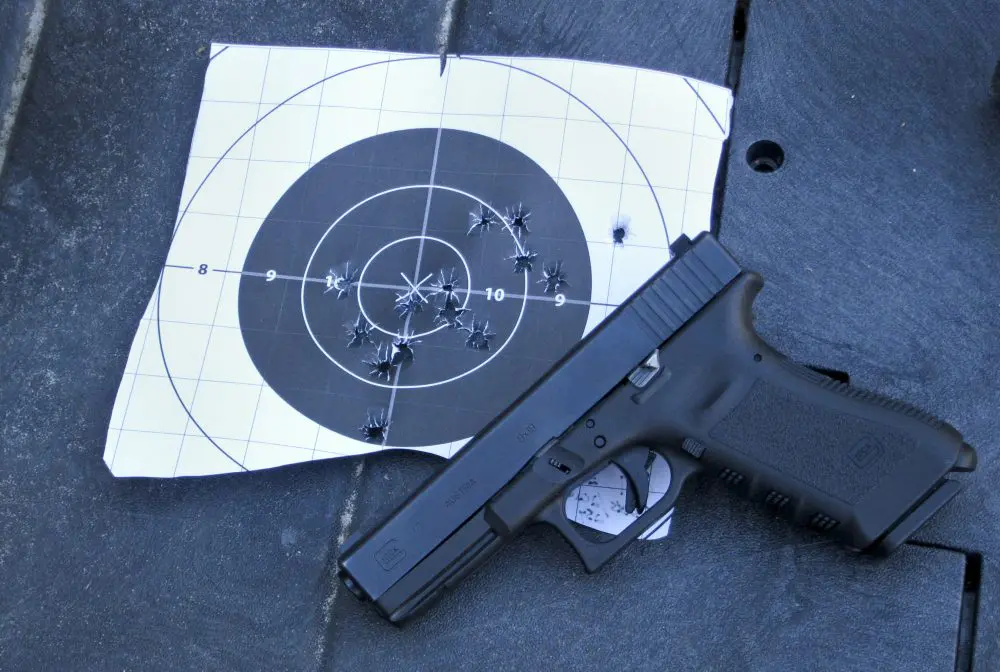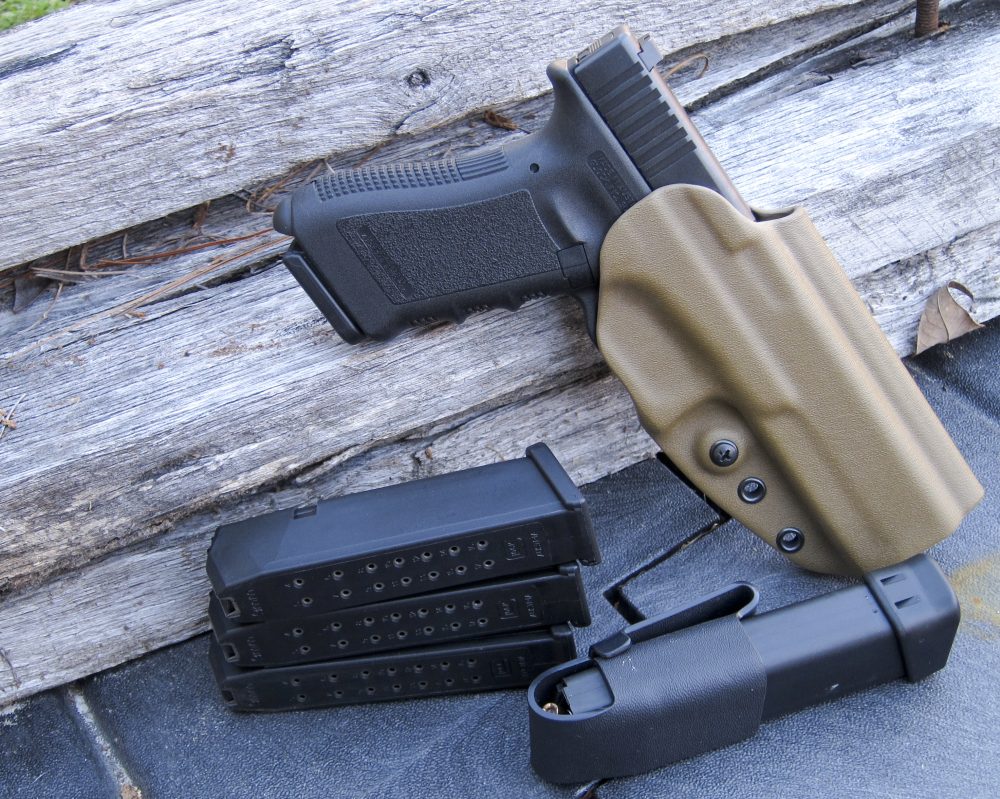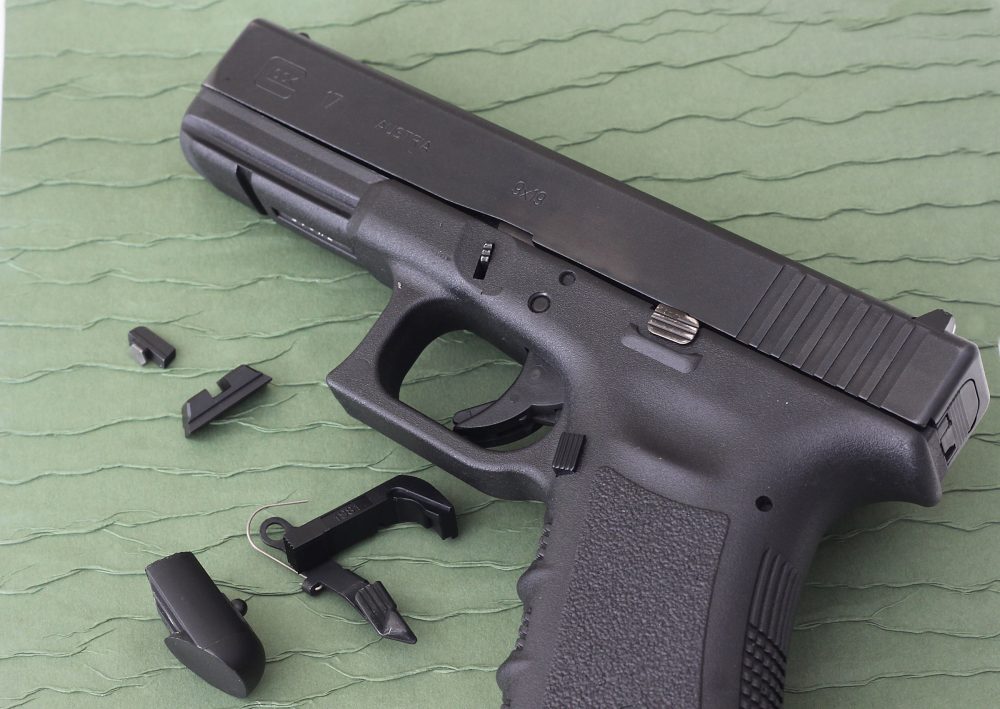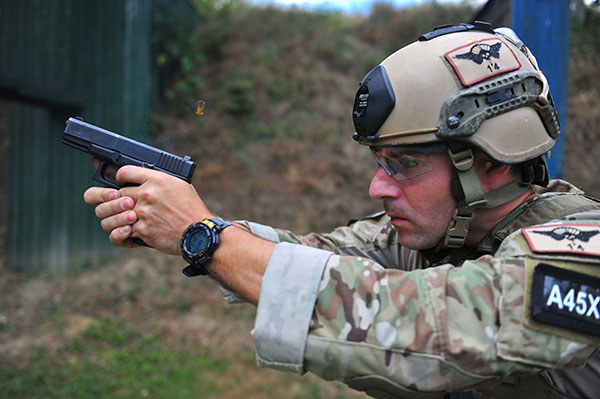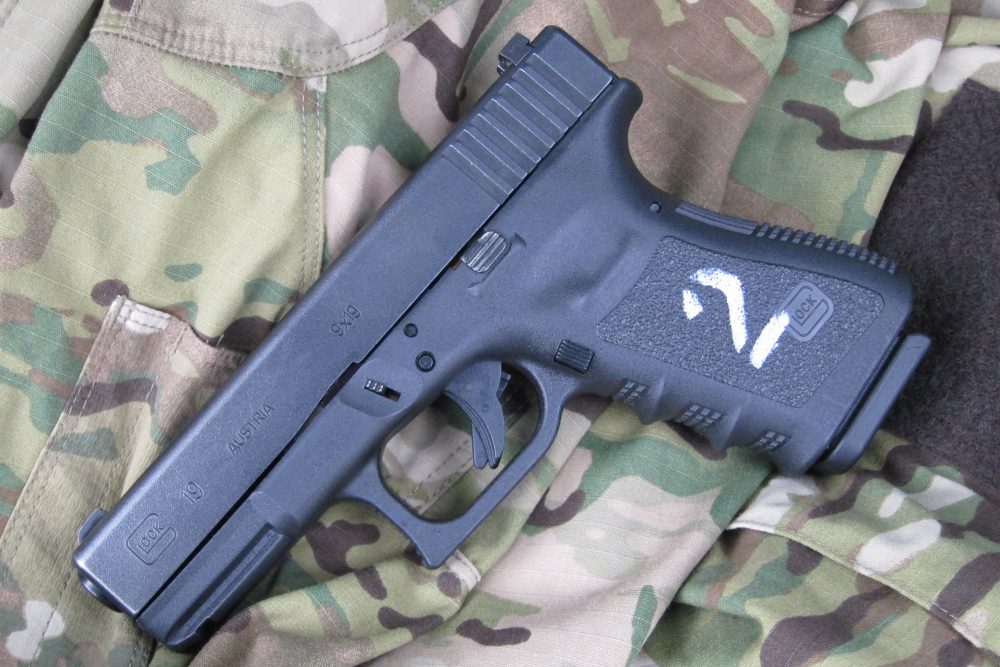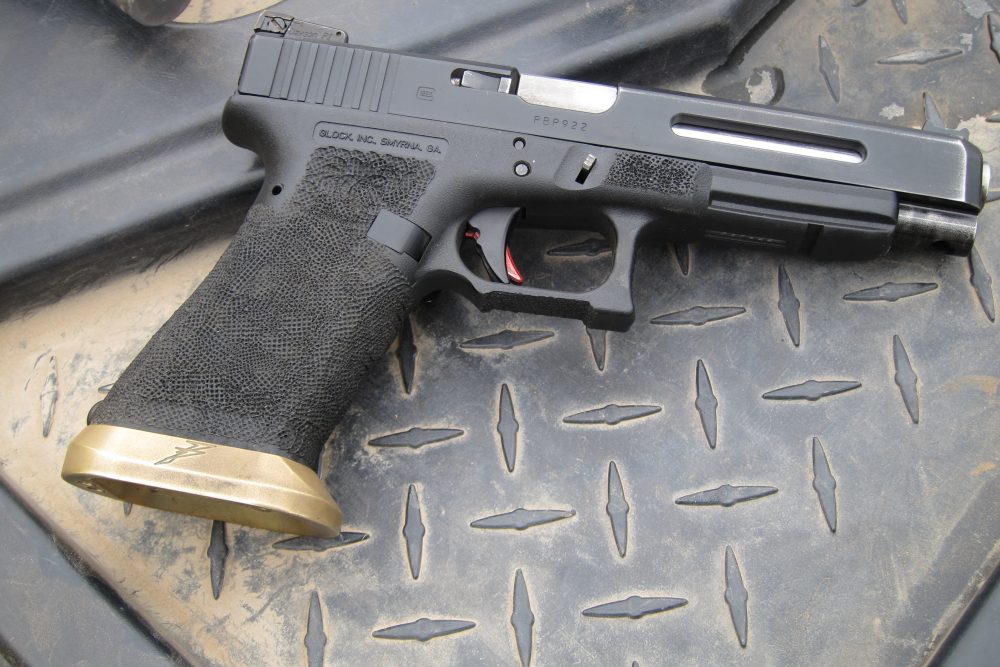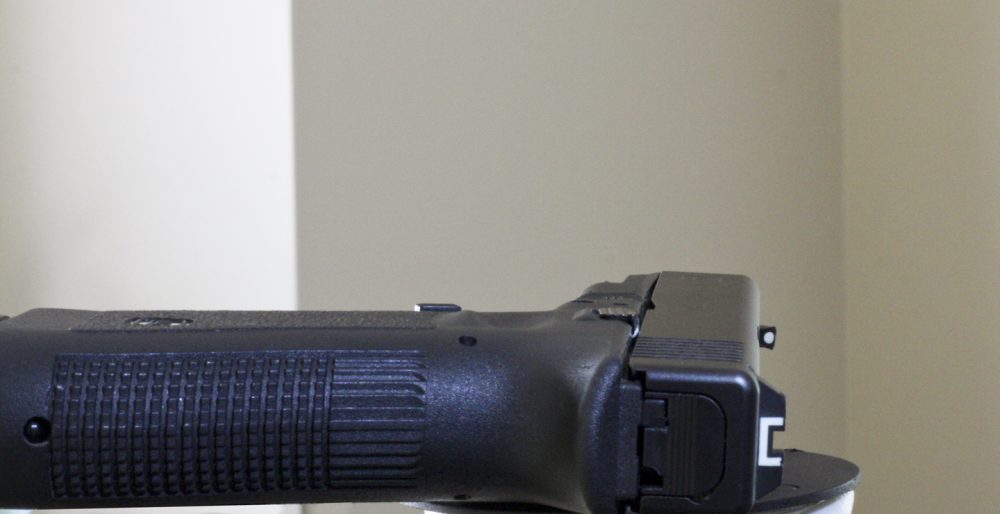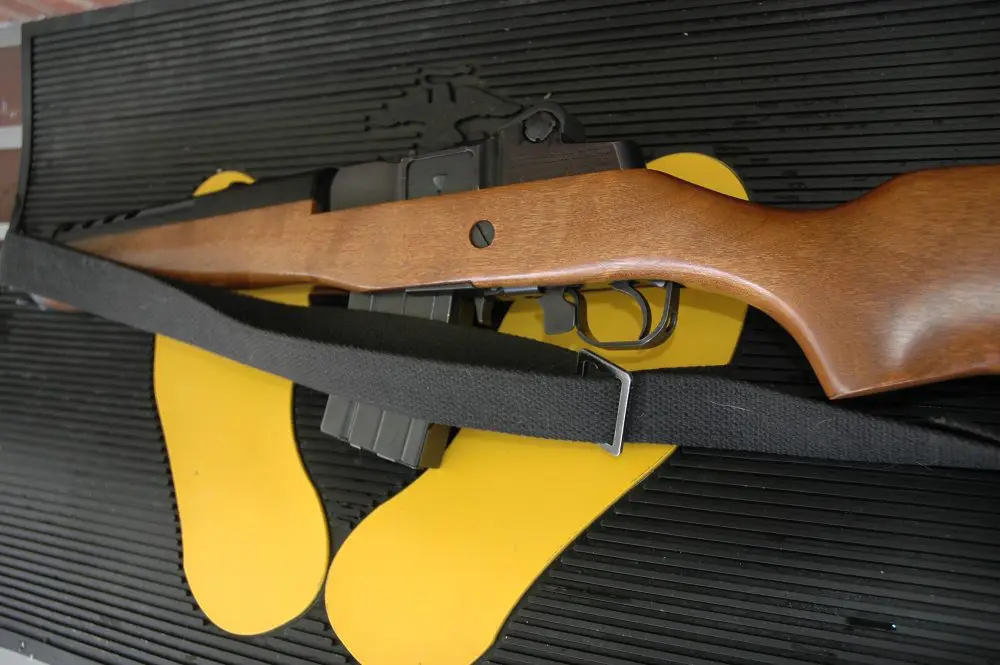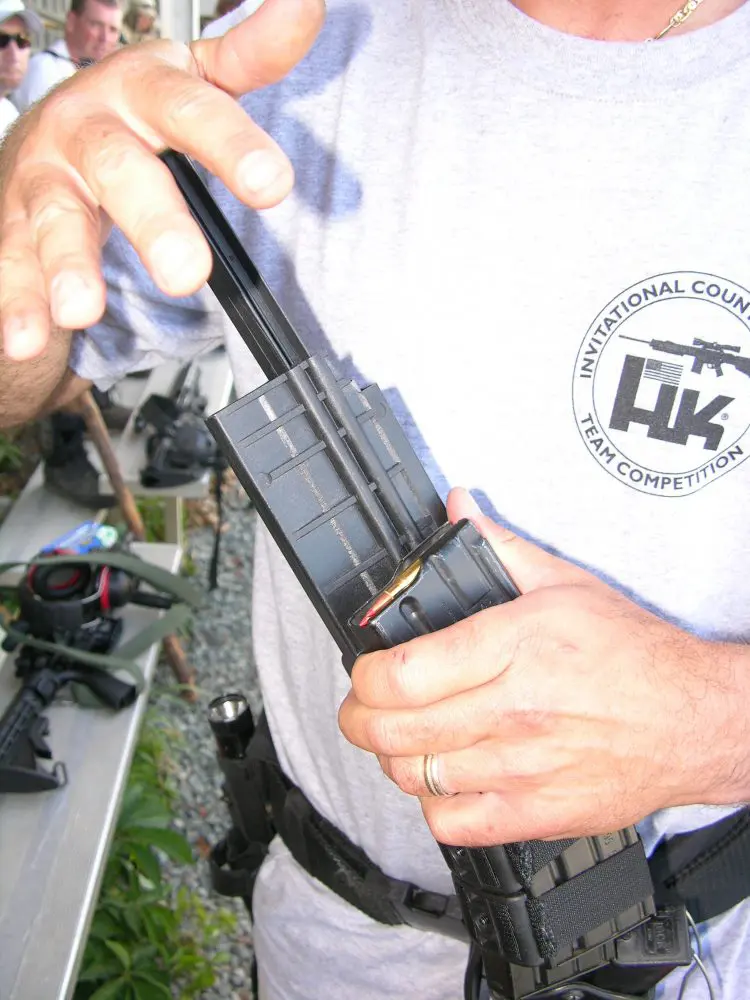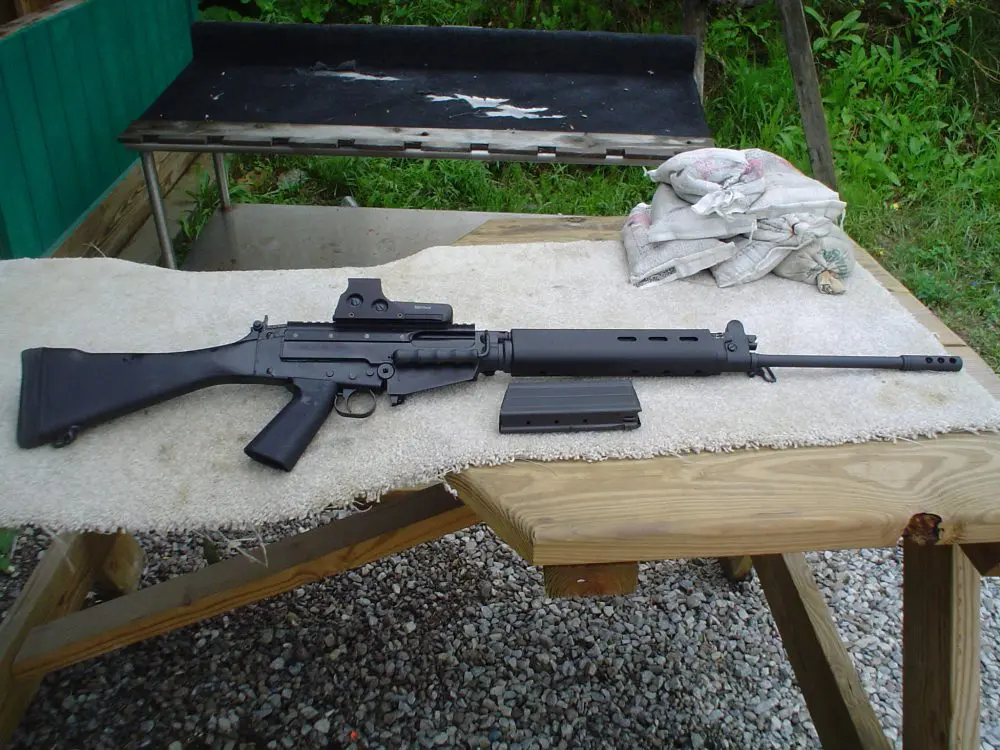The Glock has become a fixture in American pop culture, from its “X-ray proof” beginnings to its current ubiquity. It is the defining example of the contemporary polymer service pistol and has become the benchmark by which other models are judged in terms of reliability, ergonomics and cost.
I’ve recently been training with a few units that have largely and quietly switched to the Glock from their officially issued pistols, and this made me take a fresh look at and attempt to put the Austrian pistol in context. While doing so, I acquired a nice near-new circa 2006 3rd generation model 17, and I’ve been putting some solid time behind it and other Glocks.
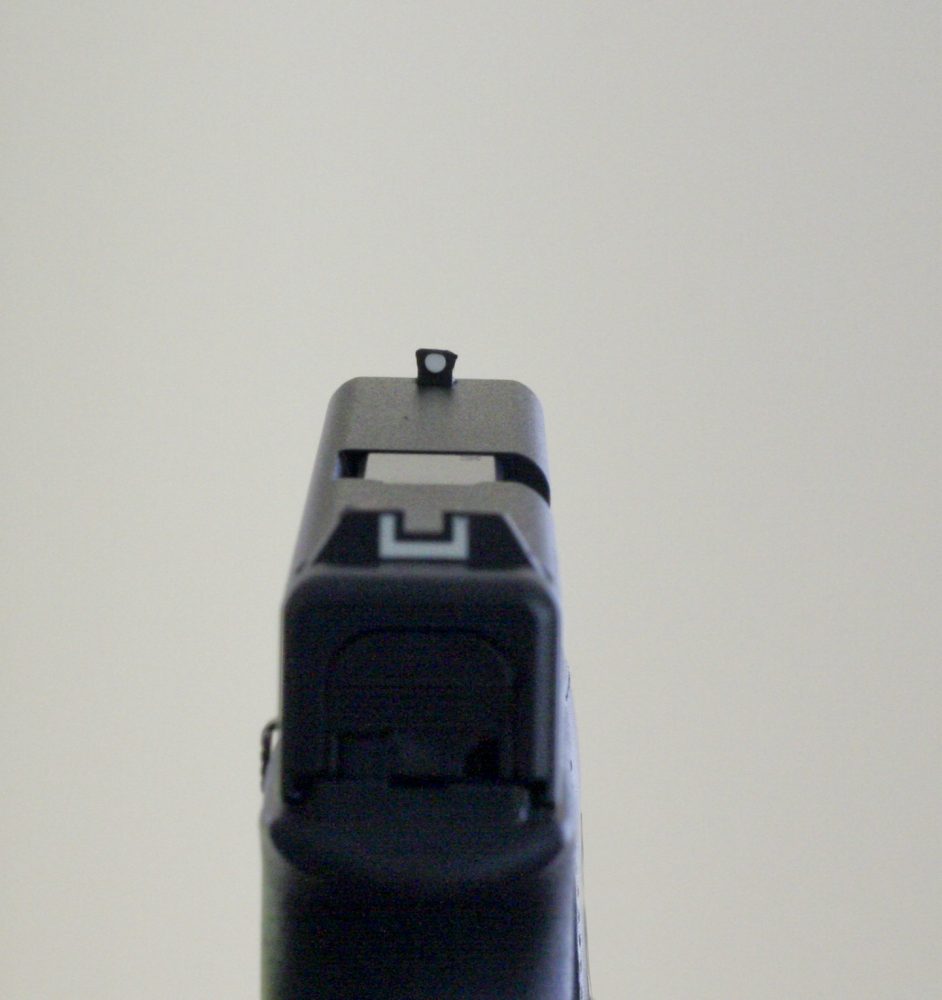
Table of Contents
THE GOOD
The Glock forever changed the handgun market. It broke paradigms in weight, weather resistance, action and capacity. My hometown PD happily wore Smith & Wesson 686s at 42 ounces for a half-dozen round payload before switching to Glock 19s at just over half the weight for more than twice the bangs.
Capacity
The demand for capacity was created by the M9 service pistol trials, and the resulting peer group of service pistols were generally in the mid-30 ounces for 15 rounds. The original G17 challenged perceptions of weight and magazine capacity, with 17 rounds housed in the polymer magazine of a 22-ounce pistol. Glock created a nearly new size/weight class with the 19, and that pistol remains one of the most versatile, size-efficient service/concealable pistols on the market.
The Glock’s capacity has aged well, with the most modern offerings from competitors being essentially what Mr. Glock offered 35 years ago.
This capacity is no small thing for, coupled with research into how (in)effective pistols truly are, modern employment of the pistol takes advantage and calls for “P = plenty” when addressing threats rather than a pre-determined pair.
Handling
The Glock “safe-action,” a genius marketing term for a pistol with no traditional safety, took time to normalize among shooters. The striker-fired autos have a trigger pull that defied comparison at the time of its debut, but has grown on the masses.
When compared to most DA/SA pistols or traditional DA only handguns, the Glock generally performs well in most hands. I notice an odd trend with Glocks and skill levels. Many new or novice shooters will shoot better with a standard Glock 17 or 19 than with many other service pistols. I suspect that the grip angle and spongy “squirt-gun” trigger break help counter anticipation.
These same things help pro shooters at the other end of the bell curve press out onto and work targets at max speed. Glocks dominate more and more practical shooting disciplines every year.
However, there is a substantial middle bracket of shooters who seem to do their best work with other pistols. For those, I suspect that until they truly master prepping the safe-action trigger system they gravitate to more traditional systems to gain a performance advantage.
Glock’s popularity ensures that aftermarket and support items are readily available. Author found multiple sources of magazines at discount prices and a quality scabbard on sale for under $10.
These rank-and-file experienced shooters have a well-known tendency to drop shots when shooting the G, anticipating and snatching their way into low, but serviceable, hits.
There is a unique feel to every pistol type in firing, and shooters often cannot express what they are perceiving in the split second that the pistol recoils. However, the Glock handles recoil particularly well, with very little rise and quick recovery. Watching newer shooters attempt follow-up shots, what the trigger lacks the Glock’s quick yet soft recovery often makes up for.
Simplicity and Durability
Simplicity and durability grabbed the shooting public’s eye years ago and every other design is competing to match the Glock’s reputation in this area. Durability and reliability overlap but are not the same thing. The Glock is no more reliable (heresy!) than its best competitors, and there have been certain combinations of generation, caliber, and ammo/accessories that have been problematic.
Many pistol designs now run with a wide variety of bullet profiles under harsh conditions, so it is hard to say that a pistol is “more” reliable than another that performs to the desired requirement. The Glock does have a track record for durability that exceeds many of its peers and lookalikes.
Many shooters benefit from replacing the sights, magazine and slide releases and adding a gap filler to the grip to get better performance from their Glocks.
And when something does break, parts are widely available and easily replaced. You are hard pressed to find a decent-sized group of shooters or armed professionals without at least one that can detail strip the gun and replace its parts.
The Glock is largely indifferent to routine maintenance, cleaning and lubrication. Younger shooters raised in the Glock era find it quizzical that we actually carried blued steel guns that required regular disassembly and cleaning just to keep the rust off, since their reality has been a plastic and tenifer coated pistol that shrugs off moisture and humidity.
I’ve always been impressed by how a Glock can run essentially dry and dirty with little difference from the clean, slick ideal. Many other pistols show a pronounced difference and will either perform sluggishly or fail to return completely to battery after a few too many rounds dirty and dry.
It is this attribute that endears the pistol to some more than any other and explains why some groups dumped other guns to take the Glock into harsh operating environments.
Glock is in military and law enforcement use worldwide. DOD photo: SSgt Placie
Accuracy
Accuracy is not the attribute that Glock leads with, but the stock pistols are consistently good. Of the four major service pistols in wide American use (Glock, SIG 220 series, Beretta 92, and Smith & Wesson M&P), Glocks are probably in third place for pure accuracy. However, the Glock tends to be solidly acceptable and consistent.
I recently watched a special operations type take a stock gun and knock down three 12-inch targets at a lasered 150 yards with as many shots. My Gen 3 17 impressed me with its accuracy, piling shots into as little as an inch and a half from standing at 25 yards, and knocking out rapid-fire groups that could pass for benched efforts.
Cost
Cost is one of the features that often pops up in Glock discussions. When durability is factored in, there is a lot to be said for the relatively low entry price for the Glock. There is an interesting gun store exercise that reveals a little “wisdom of crowds”: the percentage of the original new price a pistol brings for an unassuming, well-used example. Glocks hold their value like Toyota trucks, and for many of the same reasons—buyers respect the items’ reputations for reliability and longevity.
Glock 17 displays impressive accuracy: 25-yard group is result of 15 shots fired standing in 20 seconds.
Customization and Parts Availability
Shooters love customization, and the market grows weekly with widgetry to solve both real and imagined problems. The Glock has slowly become a major segment of the customization market, gaining on the 1911 and AR. There are parts or smiths able to tweak your Glock to nearly any intended purpose. The Glock is also simple enough that it invites more do-it-yourself customization than many other designs.
This universality has another benefit: availability. When a new sight, holster or pouch comes to market, there is no question whether it will be made for a Glock. Then that same item will likely be widely distributed and readily available.
Second-hand items can easily be found and at considerable savings as well. For this project, I found a new Eagle/G Code heavy-duty Kydex belt holster for under $10. The shooter who is passionately devoted to his new-to-market Glock rival will have a tough time in this department, going stock or choosing what is available in accessories rather than what he prefers.
On the other end of the spectrum, the shooter who is looking to sell will not have to sit long on a Glock. During the dark days of the Clinton-era Assault Weapons Ban, as well as the recent hysteria, “high cap” Glock magazines were universal currency among shooters, fetching almost 25% of the pistol’s cost.
Glock 19, such as this military-issue example, remains a remarkably efficient design that balances weight, size, capacity, and utility like few other pistols.
THE BAD
Marketing slogans aside, the Glock has some warts.
Sights
The biggest issue for me, as well as a philosophical turn-off, are the sights. Soft plastic? Seriously? To me that is the same as a car maker shipping out squad cars or ambulances with styrofoam steering wheels, assuming that they will do until the buyer chooses a replacement.
The sights are a pretty critical part of the pistol, and Glock sights are fragile. I was using a Glock 19 in a Thunder Ranch pistol class a few years back and, during the very first repetition of one-handed stoppage clearances, the rear sight popped out of the dovetail and flew across the range. Hitting became significantly more difficult thereafter.
I’ve heard apologists come up with a variety of interesting excuses, my favorites being that Glock is doing the public a favor by keeping the cost down and that serious shooters all order the steel night sights anyway.
This is not as true as you might assume.
I was recently in a joint exercise with a suburban SWAT team that was progressive and active on training and equipment issues. One of their sergeants had a Gen 4 G17 with mounted X300 in a Raven holster—pretty good stuff, except that his pistol had the stock plastic sights.
In addition to being susceptible to ripping off of the gun, the plastic sights ding and deform quickly. My otherwise pristine G17 had a badly deformed front sight that had taken some type of bump or impact and mushroomed the entire sight. Impact shifted about four inches at 25 yards, and the bulbed-out blob on the end of the pistol made acquiring a good sight picture difficult.
The good (?) news was that I was able to take a penknife and easily cut slices from either side of my front sight to a desired width until legitimate steel replacements arrived. Once the shooter decides to replace the sights, nearly endless options exist, and any gunsmith and many hobbyists can easily do the task.
Glock has a thriving aftermarket, with a wide variety of parts and customization available to tailor the pistol to different pursuits, such as this highly customized competition pistol.
THE UGLY
The Ugly’s controls are notoriously scant. Both the slide and magazine releases are low profile to the point that they are less useful than intended.
Releases
I’ve watched many shooters fumble the reload at both releases under mild training stress, and it is absolutely predictable under more stress. The problem with Glocks gave rise to dedicated TTPs of ignoring the release and running the slide over the top to chamber a round from slide lock.
Most Glock-inspired competitors now trend toward ambidextrous low profile yet useable controls that allow the shooter to choose his reload technique rather than adjust to equipment shortcomings. Aftermarket parts from Glock and others easily correct this.
However, the issue then often becomes that the releases are too large and prone to inadvertent activation with certain grip styles or hand sizes. The Glock extended magazine release costs about the same as a cup of joe and is easily trimmed with a blade until it has the exact height and profile a shooter desires.
I have worked with high-end shooters who are split into two camps: one group can do great work with a Glock once they have replaced the releases, but are frustrated until they have. The other finds that the slide release in particular interferes with their grip and chooses to keep the stock nubbin or even cut it off flush with the exterior of the slide, forcing an over-the-top release.
Excellent recovery of G17 is a key feature, evident here with pistol already back on target with ejected brass still nearby.
Takedown Procedure
The final flaw with the Glock is the takedown procedure. Glocks must be “fired” in order to take the pistol down, the design calling for the trigger to be pressed to release the striker for disassembly.
This is a terrible design feature that is part and parcel of the Glock. Sure, an attentive and reasonably intelligent adult should be able to negotiate this with no drama. But the number of locker room and home disassembly discharges over the years suggest otherwise. Glock should correct this, but that’s not to say that monkeying with the design may not lose some of the magic. It is a minus compared to most other service pistols.
IMPACT
The Glock forever changed the U.S. handgun market, dragging us into the modern era and establishing credibility for polymer striker-fired service pistols. Every serious pistol contender since its rise has incorporated many of the features it either pioneered or popularized. Most of that is good for all of us.
The market also had to adjust to the Glock’s popularity and pricing, with more traditional designs needing to cut price to compete. This has been a mixed bag for the shooter, with many popular but inherently more costly models of handguns having to dabble in plastic or molded steel parts where they were previously machined ones, and “streamlining” manufacturing processes and quality control such that the quality isn’t entirely what it was when the market competed with less emphasis on cost.
This view shows how little the slide and magazine releases protrude, the stock controls being challenging for many shooters.
Another result of the Glock’s rise has been the ugly-fying of the common handgun. Polished blue steel and clean lines are less common since the Glock defined the utilitarian tool aesthetic. That’s not to say there haven’t been ugly handguns in every generation, but they tended to be low-end exceptions.
The Glock is perhaps the perfect example of “good enough.” It has warts but is undeniably the universal standard among service pistols. Many shooters prefer certain guns to the G series, and many models have features that improve on the Glock’s shortcomings, but the Austrian design is firmly entrenched and universally available.
Given a free choice for many needs, the Glock will almost always “do,” although it might not be my personal first pick.
However, if I had to grab a high-mileage 20-year-old police trade-in 9mm to put to immediate use, the choice would be all Glock—every time.
SOURCE:
Glock, Inc.
(770) 432-1202
www.us.glock.com
